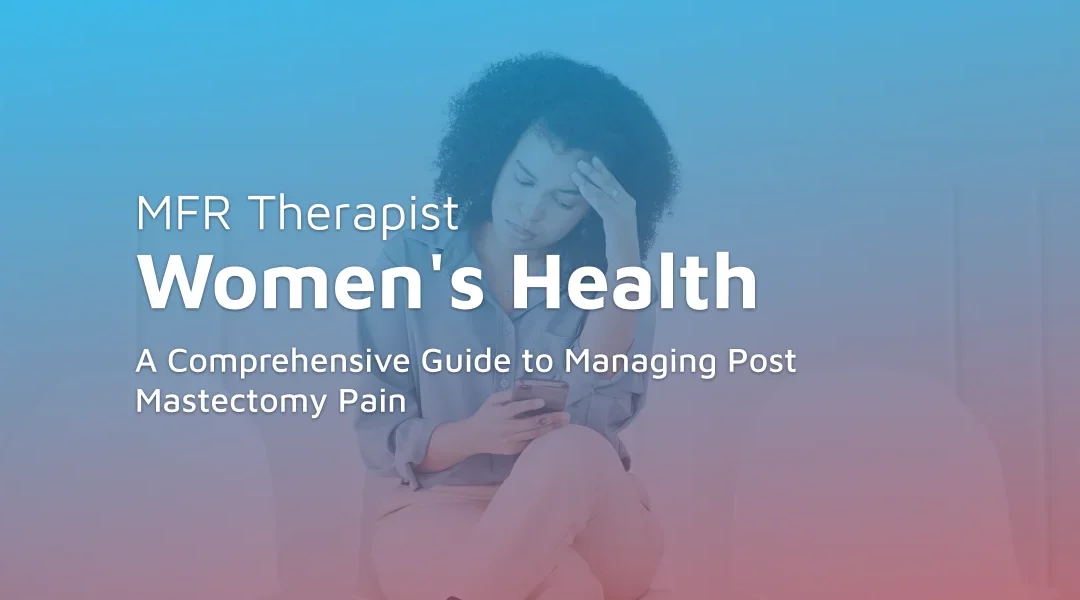Sensory alterations can be part of this condition. Some patients experience tingling or prickling sensations, numbness, or hypersensitivity. These sensory changes can be particularly distressing when combined with movements that stretch or engage the shoulder, potentially aggravating the pain. In addition to the physical sensations, PMPS can have a profound impact on daily living. It is not uncommon for patients to experience limitations in arm function and difficulty sleeping due to pain, which can compromise overall quality of life.
While the onset of symptoms can occur several months after surgery, they can persist well beyond the expected timeframe for surgical healing, sometimes lasting many years. Understanding the role of the various treatments for PMPS is crucial, as it can inform the therapeutic approach and provide a comprehensive pain management strategy. Additionally, the emotional and psychological burden of breast cancer and its treatments can further exacerbate pain. Recognizing the multifaceted nature of PMPS is essential in providing a holistic approach to treatment, one that addresses all possible contributing factors to improve patient outcomes.
PMPS can significantly impact a patient’s physical well-being. The chronic pain associated with PMPS often leads to a reduction in shoulder function and muscle strength in the affected arm. This can contribute to complications such as rotator cuff dysfunction, adhesive capsulitis (also known as frozen shoulder), and brachial plexopathy. All of these impede movement and functionality. Conditions like axillary web syndrome and lymphedema are frequently observed physical manifestations of PMPS, leading to difficulties in arm mobility and increased discomfort.
Furthermore, the formation of neuromas, which are painful nerve growths, and the experience of phantom breast pain, which is pain that is felt in the area of the breast that has been removed, are additional physical challenges that individuals with PMPS may encounter. These physical setbacks can be debilitating, limiting the ability to perform everyday activities and severely impacting the quality of life of those affected.
Relationship dynamics also tend to suffer, as the invisible burden of chronic pain is not always easily comprehended by friends and family, potentially leading to misunderstandings and stress within close connections. The complex, interwoven nature of PMPS symptoms and emotional stressors demands a holistic approach to treatment and management.
Myofascial Release Therapy
Myofascial Release (MFR) therapy emerges as a cornerstone in managing PMPS, distinguishing itself with a reputation for enhancing patient outcomes. Unlike traditional therapies that often concentrate on symptom management, MFR adopts a more holistic and physiological approach. By applying gentle but firm pressure into the myofascial connective tissue, the technique strives not merely to alleviate pain but to reestablish motion as well.
Given the unique demands of PMPS, where conventional treatments may fall short, MFR therapy provides a substantial advantage. It overcomes the pitfalls of a one-size-fits-all approach by individualizing care and emphasizing the significance of the myofascial system’s integrity. In harnessing this approach, patients can experience relief that is holistic in nature.
Physical Therapy
Physical therapy can be a helpful part of the treatment plan for PMPS, particularly because of the variability in patient symptoms and individual experiences of pain. A tailored approach to rehabilitation protocols can precisely address patient-specific needs, which is pivotal to achieving improved outcomes. Research supports that customized physical therapy following surgical intervention can significantly enhance upper extremity function and, subsequently, overall quality of life for patients.
Nerve Blocks
In managing PMPS, nerve blocks may be a viable option if all other avenues have been explored. These procedures involve the injection of local anesthetics near specific nerves to interrupt pain signal transmission and offer relief. The strategic use of nerve blocks can not only significantly reduce pain scores but also enhance the quality of life for PMPS patients. It is important to discuss this option thoroughly with a trusted health care provider to build awareness of all benefits and risks.
Surgical Interventions
Surgical intervention may be considered for persistent cases of PMPS, especially when other treatments have not provided sufficient relief. Procedures can vary but may encompass neuroma resection to address nerve pain, axillary scar release to improve mobility and reduce discomfort, or autologous fat grafting to alleviate pain related to scar tissue and soft tissue density changes. Resection typically involves the surgical removal of the neuroma or the affected nerve segment, which is then prevented from re-growing by burying the nerve end in muscle or bone.
Despite the potential for alleviating symptoms, it’s vital to discuss the risk of recurrence. The resection and relocation of nerve endings do not always prevent the reformation of painful neuromas, and some patients may experience a return of symptoms over time. For this reason, alongside other potential risks and outcomes, careful consideration and consultation between patient and provider are essential before proceeding with surgical options.
As mentioned above, MFR therapy is a safe and effective hands-on technique that involves applying gentle, sustained pressure and stretch into myofascial connective tissue restrictions to eliminate pain and restore motion. This therapy is conducted directly on the skin without oils, creams, or machinery. MFR therapists detect fascial restrictions and apply the appropriate amount of sustained pressure and stretch to facilitate the release of the fascia. The therapists in our network are trained in the John F. Barnes’ methodology of MFR, a renowned approach that has revolutionized the field of MFR therapy.
How MFR Works for PMPS
MFR alleviates pain in PMPS patients by engaging the intricate network of myofascial tissues which are the tough membranes that envelop and support all structures and cells in our bodies. As mentioned above, the therapy involves applying gentle, yet sustained pressure to the fascial restrictions, promoting release and unwinding of tightness. This targeted approach not only aims to eradicate pain but also strives to reinstate functional movement by tackling the underlying issues causing discomfort.
Benefits of MFR for PMPS
MFR offers a range of benefits for patients suffering from PMPS. It provides significant pain relief and helps to restore motion, allowing patients to regain control over their daily activities. This can lead to improved physical functioning and a better quality of life. MFR also addresses the emotional consequences of chronic pain by helping to reduce stress and anxiety associated with the condition. The therapy can also enhance body awareness, which can help patients better understand their bodies and manage their symptoms. Through our network of certified therapists, we witness the transformative impact MFR has on enhancing both physical and emotional well-being for those affected by PMPS.
The Importance of Holistic Care
Holistic care is essential in managing PMPS. A holistic approach acknowledges the interconnectedness of physical, emotional, and social aspects of health. It focuses not just on treating the symptoms but also on addressing the root cause of the pain. MFR therapists bring a holistic perspective to their practice. By targeting the myofascial tissues, MFR therapists help their patients address the root cause of their pain and provide a targeted and effective approach to relieving the pain associated with PMPS.
Finding a Certified MFR Therapist
Finding a certified MFR therapist can help you receive the most effective treatment for your unique needs, particularly when addressing conditions like PMPS. These certified professionals are equipped with the knowledge and specialized training in the John F. Barnes approach to MFR to help you find relief. To facilitate your search for a MFR therapist, our platform houses an extensive network of such dedicated professionals. Get started by finding a therapist who can support your path to recovery.
Living with PMPS can be challenging, but support and effective treatment options are within reach. MFR therapy offers a promising path to pain relief and an improved quality of life. With a dedicated network of highly skilled therapists certified in the John F. Barnes’ MFR methodology and technique, finding expert care is simpler than ever. Take the first step towards regaining control of your life by exploring MFR Health today.

